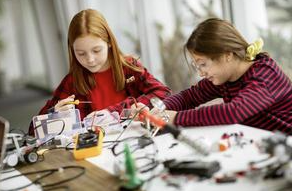Online labs provide students with valuable hands-on learning experiences in virtual environments. These digital platforms allow learners to simulate scientific experiments, coding projects, and interactive activities from anywhere, making science, technology, engineering, and math (STEM) subjects more accessible. Free online labs are especially useful for schools with limited resources or for students learning remotely who want to reinforce classroom concepts.
Benefits of Online Labs for Students:
- Practice experiments safely and affordably
- Visualize scientific and technical processes
- Reinforce theoretical learning with simulations
- Access lab experiences anytime, anywhere
- Encourage curiosity and independent exploration
Top Platforms That Offer Free Online Labs:
1. PhET Interactive Simulations (phet.colorado.edu)
Developed by the University of Colorado Boulder, PhET provides free interactive math and science simulations. Students can explore physics, chemistry, biology, and earth science concepts through animated labs and scenario-based learning.
2. LabXchange (labxchange.org)
A project of Harvard University and the Amgen Foundation, LabXchange offers free virtual lab simulations, videos, and assessments in biotechnology, genetics, and molecular biology. Users can create learning pathways and share interactive content.
3. Learn Genetics (learn.genetics.utah.edu)
This platform from the University of Utah includes virtual labs and animations focused on genetics, heredity, and molecular biology. It’s an excellent resource for high school and introductory college biology students.
4. ChemCollective (chemcollective.org)
Designed for chemistry students, this site offers online labs, problem-solving activities, and tutorials. Users can mix virtual chemicals, run reactions, and measure outcomes—all within a simulated environment.
5. The Concord Consortium (concord.org)
This nonprofit provides interactive STEM models and simulations covering topics like physics, energy, climate, and life sciences. Many labs align with Next Generation Science Standards (NGSS).
6. ExploreLearning Gizmos (gizmos.explorelearning.com)
While full access requires a subscription, many Gizmos are available for free trial. These math and science simulations include manipulatives and assessments for grades 3–12.
7. HHMI Biointeractive (biointeractive.org)
Offered by the Howard Hughes Medical Institute, Biointeractive features free online labs, videos, and case studies related to evolution, biodiversity, and health sciences. It supports inquiry-based science learning.
8. iBiology (ibiology.org)
iBiology offers free biology videos and interactive materials from leading scientists. Some content includes lab techniques, scientific methods, and current research insights, ideal for high school and college students.
9. Go-Lab Portal (golabz.eu)
This European platform offers online labs and inquiry learning apps for STEM topics. Students and educators can customize lab environments and share resources across classrooms.
10. Tinkercad Circuits (tinkercad.com)
Provided by Autodesk, Tinkercad Circuits lets users simulate electronic circuits, breadboards, and coding using Arduino. It’s a top tool for students learning electronics and robotics.
Tips for Using Online Labs Effectively:
- Review the objectives before starting a simulation
- Take notes and screenshots to record observations
- Complete related worksheets or assessments if available
- Discuss results with classmates or teachers to deepen understanding
- Explore multiple labs to reinforce similar concepts
Conclusion:
Free online labs offer engaging and flexible ways for students to explore STEM concepts without needing physical lab space or equipment. These platforms help learners develop scientific thinking, experiment virtually, and gain practical skills in a safe and accessible format. Whether for school assignments or self-guided learning, online labs make science and technology more interactive and enjoyable.













